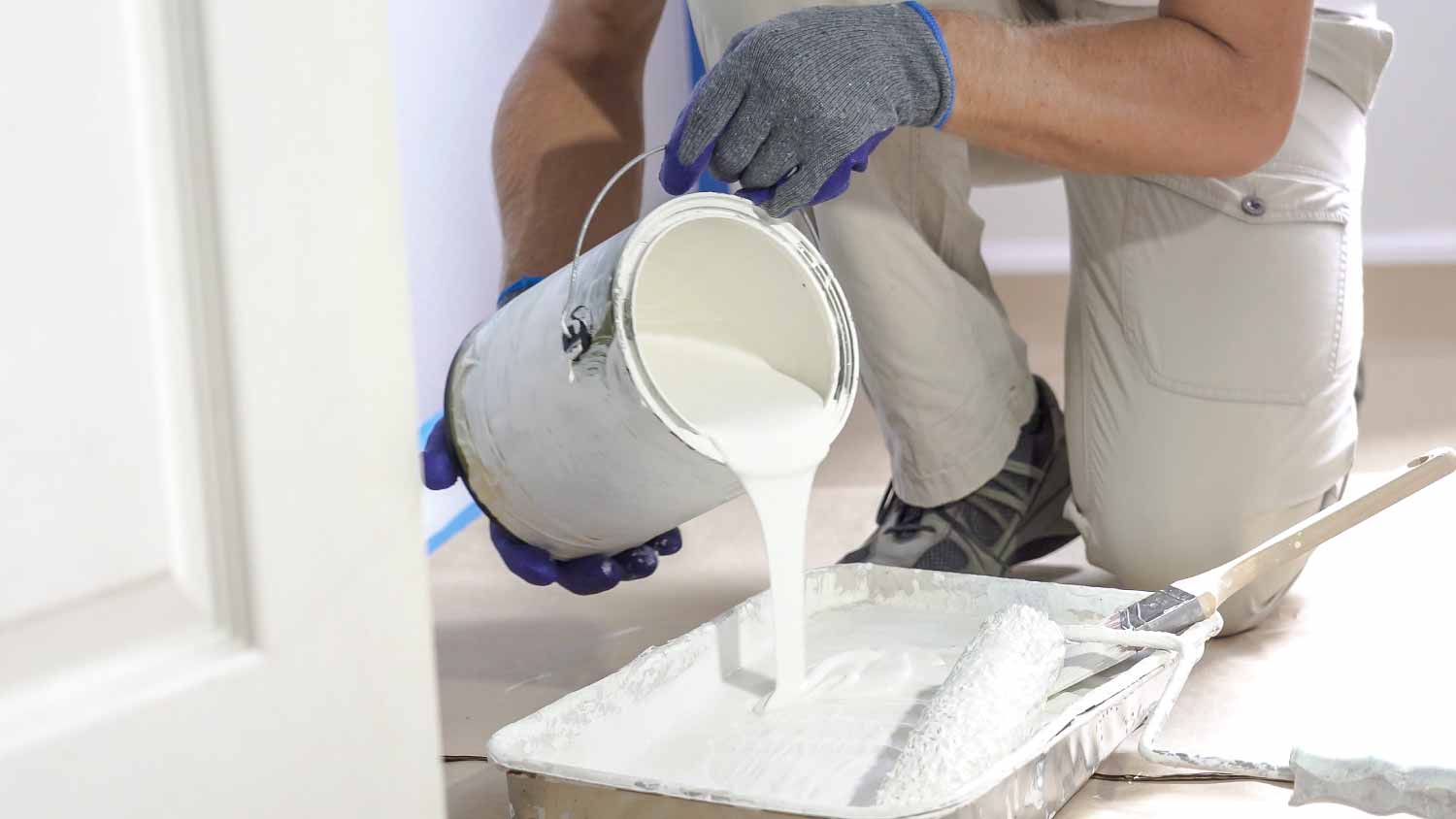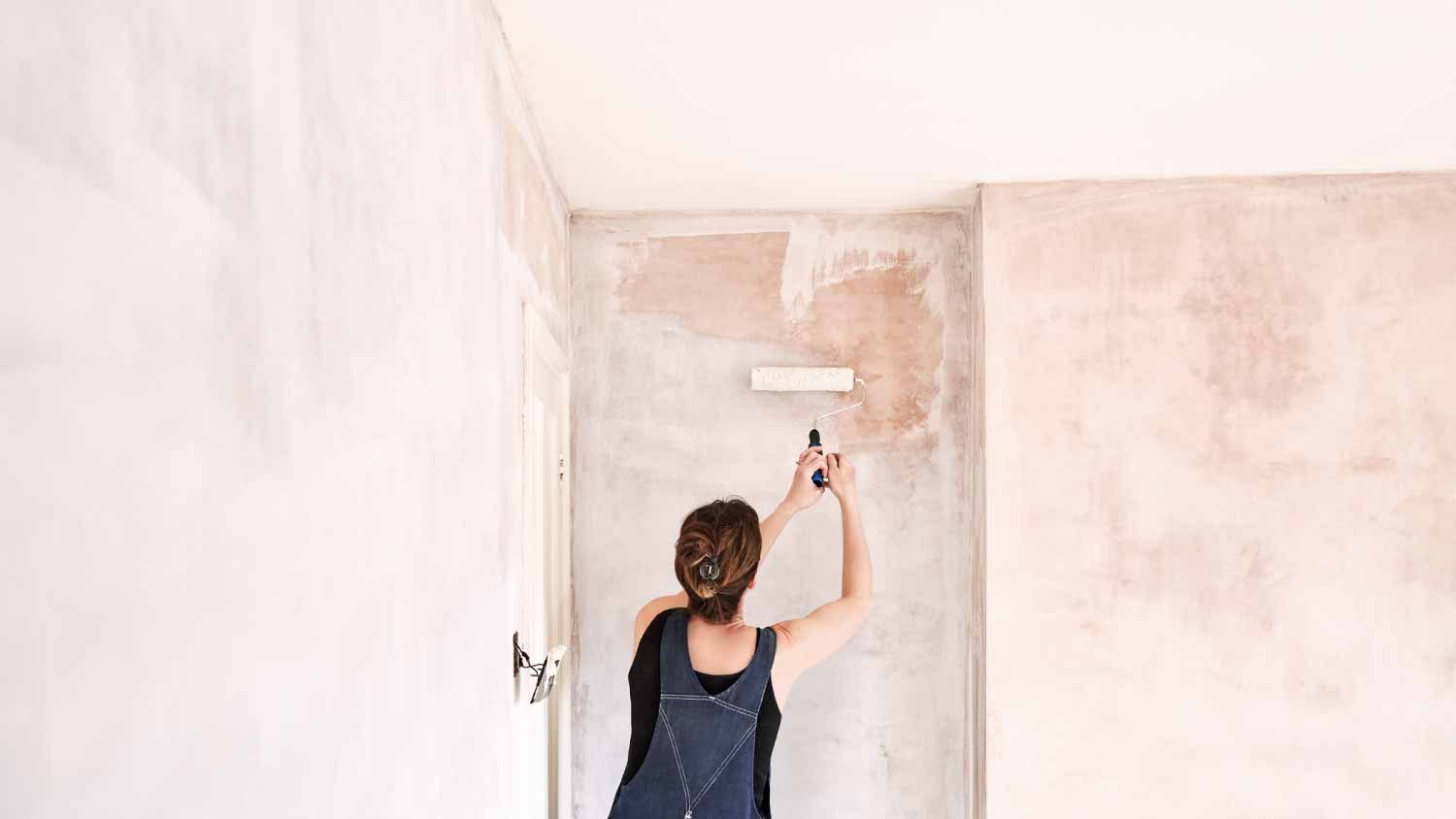
The cost to paint the interior of a house in Dallas, TX depends on size, layout, type of surface, and more. Learn what factors can influence your total in this guide.
The weather is a concern for indoor painting too—who knew?


When painting interiors, your paint, room, and surface should be at the same temperature—ideally between 50 and 85 degrees Fahrenheit.
Temperature and humidity both affect how paint dries and sticks to the surface, so it’s crucial to get these factors right.
Hiring a pro to paint interiors costs $300 on average and may reach thousands of dollars.
Use the daylight to your advantage to avoid nighttime shadows.
Timing is everything regarding interior painting. Factors like humidity, ventilation, and even temperature are important considerations—just like the paint you choose. Remember, no one wants a finish that peels off, bubbles, or cracks. Here's what to know about the best time to paint indoors before you pick up those brushes.
It may be surprising to most, but the best time to paint indoors is during the winter.
For optimal results, the surface you are painting, the paint, and the room temperature should range from 50 to 85 degrees Fahrenheit, with humidity levels in the 40% to 70% range. Painting professionals call it the Goldilocks Zone. It can't be too hot, cold, dry, or humid. The conditions need to be just right.
There are a few factors that affect how well your indoor paint adheres to your surfaces. Here are some things to consider before you get rolling.
Temperature has a major impact on how your paint adheres to walls, ceilings, and trim. If it’s too hot, the paint will dry rapidly and fail to bond with the surface. If it’s too cold, the binders may not work at all. At both extremes, you’ll experience paint bubbles, cracks, alligatoring, or other imperfections that can ruin your project.
Humidity also plays a role, whether the levels are too high or too low. High humidity can slow down the drying and curing process of paint, leaving you with uneven finishes, streaks, or peeling. When the air is too moist, especially above 70%, paint may not adhere properly to surfaces and can take much longer to dry between coats, increasing the risk of imperfections.
Very low humidity can cause paint to dry too quickly, which can result in brush marks or an uneven texture. The ideal humidity level for interior painting is between 40% and 50%, ensuring a smooth application, proper drying, and a durable finish.
In addition to the proper temperature and humidity, you want fresh air flowing in the room you are painting. It helps regulate how long it takes the paint to dry and keeps the fumes from becoming overwhelming. But you should avoid painting on a very windy day when dust and debris can blow into your home. Be mindful of storms, rains, and temperature fluctuations that may occur on the day you plan to paint.
Think about when you've got the best lighting to paint. Painting during the day means you can see the colors and coverage better, especially if you’re painting a sun-filled room.
Due to drying and curing requirements, the type of paint used can influence the best time to undertake interior painting projects. Water-based paints, like latex, dry faster and give off fewer fumes, making them ideal for year-round use.
However, oil-based paints take longer to dry and release stronger fumes, which can be a problem in colder months when your windows are closed. Warmer, well-ventilated seasons like spring and early fall are best for those types of paint.
Your schedule matters as well. Are you a morning person who likes to get things done early? Or do you prefer to save painting for a lazy Sunday afternoon? Pick a time that suits you best—and don’t forget to factor in drying time between coats of paint.
The room's purpose also affects the best time to paint indoors. If you're painting a bedroom, choose a night or two where you can bunk elsewhere. That way, the paint can dry without any interruptions. Painting a bathroom? Make sure you have an alternative bathroom to use, or at least avoid taking showers and introducing humidity while the paint dries.
The worst time to paint indoors is during extreme weather conditions that can adversely affect the painting process and the quality of the finish. Even though painting in winter is recommended, avoid painting when it is snowing or raining. Both conditions affect humidity levels in your home and alter the drying process, making it more difficult to leave the windows open to ventilate the area. You'll want to avoid painting at night when lighting isn't the best, which can cause issues with shadows and distort paint color. Nighttime temperatures and humidity levels can be challenging as well.
There are a few things you can do to help stay more comfortable during the painting process and ensure you get the best results possible.
Check the manufacturer’s recommendations. Before you get started, check the temperature and humidity recommendations on the back of your can of paint. Make sure the room you’re painting meets those criteria for the best results.
Crack a window and turn up the heat. Cracking a window open is a good idea to introduce some ventilation. This will get rid of fumes and also provide some natural air to help the paint dry. If it’s too cold to open a window, chances are it’s too cold to paint. You can always turn up the heat in the room to regulate the temperature, though.
Don’t paint during a snowstorm. Snow can introduce humidity to your room, and too much humidity can prevent your paint from adhering properly. If you don’t have a means of testing and controlling the humidity, at least avoid painting during a snowstorm.

The cost of painting the interior is around $2,000, on average. Professional painters typically charge per square foot, which is $2.75 on average. Walls, ceilings, and trim may boost the cost to $4.70. If you’re wondering how much it costs to paint a room, your out-of-pocket expense can start at $300 and top off at $2,800.
However, the cost to paint a home can vary widely depending on several factors, including the size of the home, the condition of the walls, the type of paint and materials used, labor costs in your area, and any additional services required. You may be able to take advantage of lower costs during the winter, when painters experience a slow season. The cost of materials can see a dip during seasonal sales around Thanksgiving and Christmas, which can help offset overall project costs.
It's a good idea to get quotes from several professional painters in your area to understand the cost of your specific project better. Additionally, if you plan to do the painting yourself, you'll need to factor in the cost of paint, primer, brushes, rollers, drop cloths, and any other materials you'll need, as well as your own time and labor.
Ultimately, the decision to DIY or hire a professional painter depends on your preferences, budget, and the specific needs of your project. DIY can be rewarding if you're comfortable with painting and have the time and energy to devote to the task. However, painting can be deceptively tricky, as you have to get the conditions right and also use proper techniques to get a professional appearance.
Hiring an interior painting company near you may be the best choice if you want high-quality results, value your time, or have a large or complex project. You’re less likely to run into bubbles, cracking, and other imperfections when you hire a pro.
From average costs to expert advice, get all the answers you need to get your job done.

The cost to paint the interior of a house in Dallas, TX depends on size, layout, type of surface, and more. Learn what factors can influence your total in this guide.

The cost to paint the interior of a house in Columbus, OH depends on size, layout, type of surface, and more. Learn what factors can influence your total in this guide.

Limewash can add timeless texture to your living space. The cost to limewash interior walls depends on factors like surface area, materials, and prep work.

Learn how to paint paintable wallpaper to add texture and color while hiding imperfections on your walls with this handy step-by-step guide.

Curious about what's under old coats of wall paint? Learn how to remove paint from wood with these tricks to bring the wall, table, or home siding back to life.

From stone, tile, wallpaper, or paint, discover different accent wall ideas for your space.